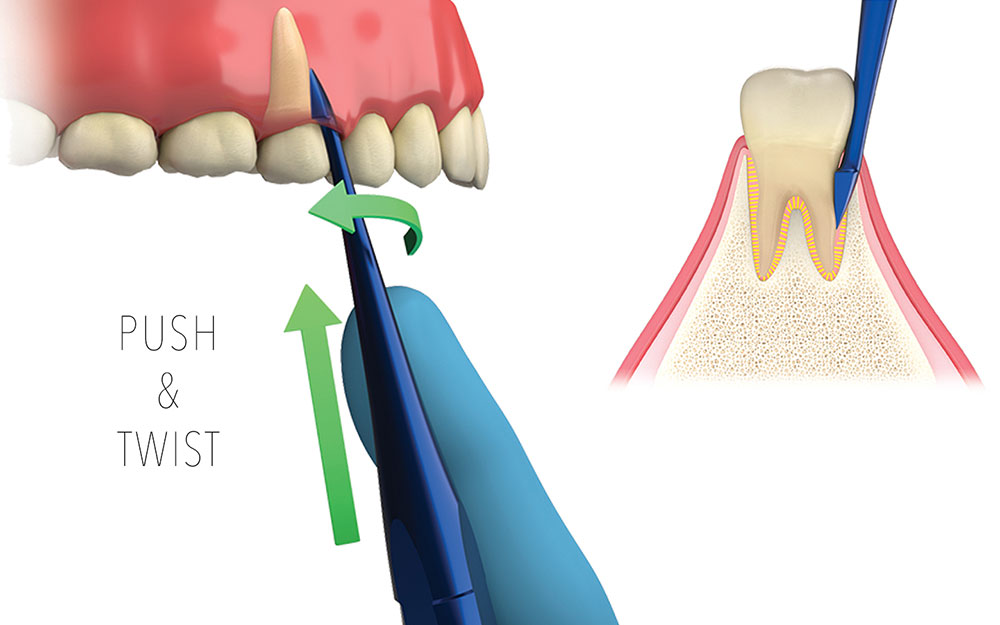
Tooth extraction may be performed for a variety of reasons, and when doing so, it is important to determine the most efficient treatment plan that allows for preservation of surrounding tissues. Factors to consider prior to extraction are bone resorption and the possible changes in gingival contours. For these reasons, an atraumatic extraction is recommended to help preserve the alveolar socket and bone ridge. Additional consideration may be given to bone grafting, membranes, and possible dental implants. Prior to tooth extraction, a complete radiographic assessment will be performed to help determine the characteristics of the tooth. For example, has the crown of the tooth undergone previous prosthodontic or endodontic treatment, making it more susceptible to fracture during extraction? Additional complexity may be discovered by the presence of long and/or divergent, bulbous roots, root fusions, curved roots, dimensional changes of periodontal ligament space, ankylosis, or proximity to the maxillary sinus floor or mandibular canal.

Elvatomes®
Many dentists favor the Elvatome by TBS Dental (fig. 1-2) for the loosening of soft tissue attachment of the tooth prior to extraction. The Elvatome eliminates the need for two different instruments by combining the sharpness and precision of the periotome with the strength of a luxating elevator. The spade-shaped working end features a fine, sharp point, ideal for entering the tightest spaces with minimal damage on soft tissues. As it is inserted into the PDL-space to cut connective periodontal fibers, the concave surface of the Elvatome hugs the root and aids in expansion of the alveolus. Luxation is performed when inserted by applying a twisting and/or rocking motion to reduce tooth retention in the alveolar socket. The Elvatomes come in 5 different tip angulations–straight, mesial, distal, right, left–making any tooth in the mouth easy to access.

FRINGS® Forceps
Tooth luxation and extraction can be made easier by using the award-winning FRINGS Forceps by TBS Dental (fig. 3-4) which feature a new spring-driven “auto-retractable” design that replaces the need to open the forceps with your fingers, requiring an awkward grip during extraction. This simple approach completely revolutionizes tooth extraction, offering a more atraumatic extraction through improved apical grip with tapered, beveled, and serrated beaks. Given that teeth come in different shapes and are located at different angles in the mouth, TBS offers twelve unique FRINGS for optimal crown/root engagement. All TBS instruments come with a lifetime warranty. To see these instruments in action, visit www.youtube.com/tbsinstruments.




